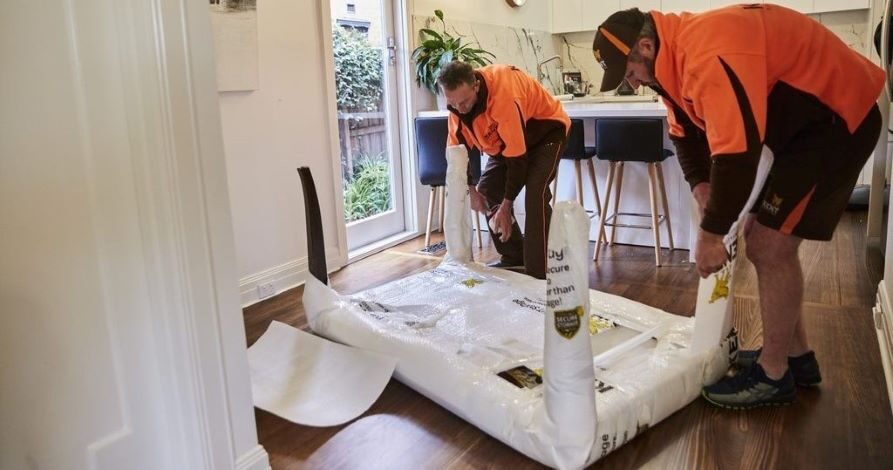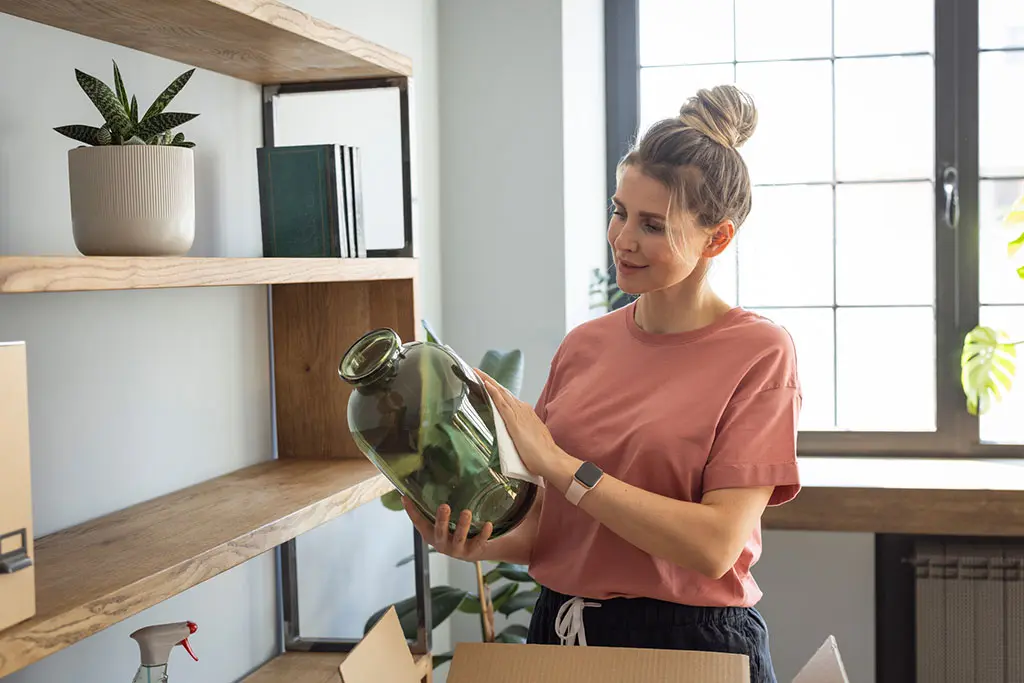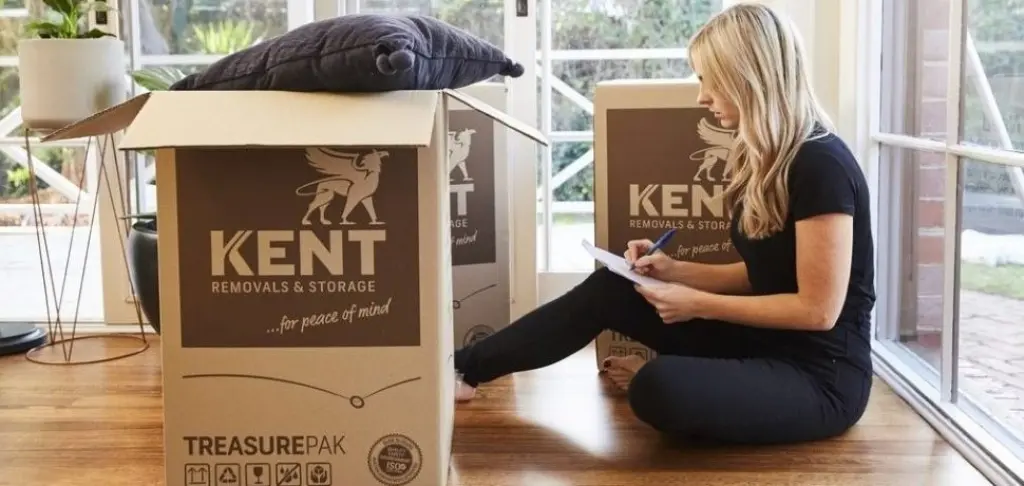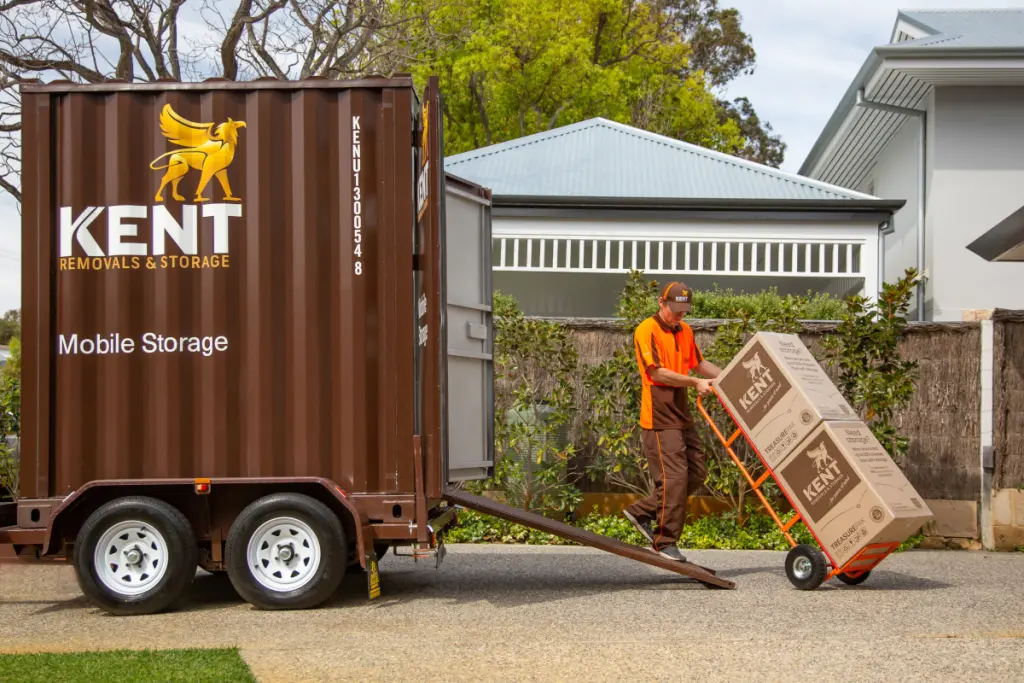Storing furniture in a storage unit can be a stressful experience. We all love our furniture, so we want to do everything we can to ensure it comes out of storage in perfect condition.
Our step-by-step guide to packing, wrapping and storing furniture in a storage unit is designed to make the entire process as easy and stress-free as possible.
- Step 1: Thoroughly clean and dry your furniture
- Step 2: Carefully prepare your furniture
- Step 3: Dissemble your furniture wherever possible
- Step 4: Carefully wrap each item
- Step 5: Transfer your furniture to a moving truck with care
- Step 6: Load your moving truck properly to limit potential damage
- Step 7: Store your furniture intelligently
- Step 8: Contact a professional
Step 1: Thoroughly Clean And Dry Your Furniture
Before storing furniture in a storage unit, you need to ensure that each item is in perfect condition. That means thoroughly cleaning and drying each piece. Follow the below advice for proper cleaning techniques:
Upholstery: Use a vacuum to remove any dirt or debris, and use upholstery cleaner to lift any odours
Glass: Dust before using glass cleaner to remove any marks
Steel: Dust before using multipurpose cleaner
Leather: Vacuum before utilising a leather cleaner
Wood: Dust before applying a mild solution of soap and water.
You should begin the cleaning process at least 24 hours before you plan on wrapping furniture for storage, as all pieces will need to be completely dry. Even the slightest hint of moisture can create problems with mould and mildew. You can also run a hairdryer over your furniture just before wrapping to be entirely sure.
Step 2: Carefully Prepare Your Furniture
Once your items are clean and dry, you should prepare them for the rigours of storage. When storing leather furniture in a storage unit (such as leather couches and armchairs) be sure to wipe down items with leather protectant and a soft cloth. Wooden furniture should also be treated using the product recommended on the manufacturing label. You should also use masking tape to place ‘X’ marks on any large sections of glass or mirrors to help prevent breakages, and steel should be checked for rust. Rust will spread if left unattended, so use rust removal to get rid of it before wrapping.
Step 3: Dissemble Your Furniture Wherever Possible
There’s no point trying to save time by leaving furniture assembled. Not only will this waste space within your storage unit, but it also increases the chances of your items being damaged during transit. The bigger the item, the more chance there is of things toppling over and ruining it. If you’re storing leather furniture in a storage unit, dissembling the piece will also allow you to wrap the leather sections tight enough to prevent any moisture seeping in.
However, you should avoid dissembling antique items of furniture. These are far too fragile to go through the rigours of being unscrewed and screwed together again.
Step 4: Carefully Wrap Each Item
Furniture wrapping for storage is the most critical aspect of this entire process. Without wrapping furniture for storage properly, your household items may be irreparably ruined. When it comes to knowing how to wrap furniture for storage, you need to understand how to protect against the following factors:
Dust, dirt and grime
Temperature fluctuations
Humidity
Moisture
Pests
Impact.
To protect against all these factors, you need to provide cushioning, as well as a tight wrap. Follow these wrapping techniques for your items:
Wooden and leather furniture: Wooden furniture should be wrapped with old blankets before packing wrap is applied. If you apply packing wrap directly to wooden or leather furniture, it can cause shrinkage and damage to the material
Upholstery: Upholstery should be wrapped in a breathable plastic wrap, which you can purchase from a storage provider. The wrap needs to be breathable to prevent odours from building up, yet tight enough to prevent moisture from getting in
Glass: Glass section should be encased in a Styrofoam box before being placed inside a similarly-sized double-corrugated storage box
Metal: Metal furniture should be wrapped in plastic wrap before being encased in a soft material – old tracksuit pants are the perfect material.
You will need to purchase the following items for the perfect wrap and transport:
Packing wrap
Moving blankets
Bubble wrap
Packing tape
Moving dollys
Shoulder dollys
Lifting straps
Tie-downs
Double-corrugated storage boxes.
Step 5: Transfer Your Furniture To A Moving Truck With Care
Once your furniture has been wrapped, you need to move it carefully to the moving vehicle. You should always choose a vehicle with a hydraulic lift or a ramp for safety. You should also draw up a moving plan, so you know exactly where you’re going when you pick up the items. You don’t want to damage your carefully wrapped furniture by trying to shove it through a hallway or door that is too small. Always use the correct manual handling techniques, which include:
Always have two to three people on-hand to assist you
Grasp tall items from both low and high positions to prevent them from toppling over
Lift with your knees—not your back
Use equipment like moving dollys, shoulder dollys and lifting straps to limit the impact on your body
Ensure that no one is standing behind furniture when it is being loaded onto the truck.
Step 6: Load Your Moving Truck Properly To Limit Possible Damage
Before storing furniture in a storage unit, you need to transport it to the unit safely and securely. To ensure your furniture arrives at the storage space intact, you should:
Start by placing large items around the walls of the truck, and placing smaller items inside these items from protection
Never stack too high. The lower you stack, the less chance there is of anything toppling over
Secure everything tightly, using heavy duty straps.
Step 7: Store Your Furniture Intelligently
Putting furniture in storage is about more than just dumping everything inside and locking the door. When packing furniture for storage, keep the following in mind:
Don’t stack furniture too close together. You need to allow space for the items to breathe, or they can become musty and mouldy
You can ‘nest’ items inside one another, using larger pieces to provide protection for smaller items. For example, your dining room table can be used to protect your bedside tables
Don’t place anything directly on the floor. If the space gets damp anything on the floor will be ruined. Instead, when storage furniture in a storage unit, you should lay wooden pallets on the floor first. These will help keep everything dry
Never place anything directly against the walls. If your storage space becomes humid, condensation can collect and run down the walls, leaving your furniture damp and prone to mould.
Step 8: Contact A Professional
If you’re struggling with wrapping or packing furniture for storage because you don’t have the time or the manpower to do it, why not go with a professional secure storage company? That way, one company can take care of the wrap, transport, pack and redelivery and your furniture will get the protection that only experts can provide.
Follow this process, and you’ll know how to wrap and pack furniture for storage and how to store furniture in a storage unit, so when you pull it out again, it will still be in the same condition.
Other ways we support you
Kent will take care of packing, unpacking, cleaning, secure storage and even setting up your new home, leaving you to settle in stress-free, with ease.

Ready to make your move?
From packing to getting you settled in, Kent can handle every part of the process.
Talk to us to see how we can tick all the right boxes.






